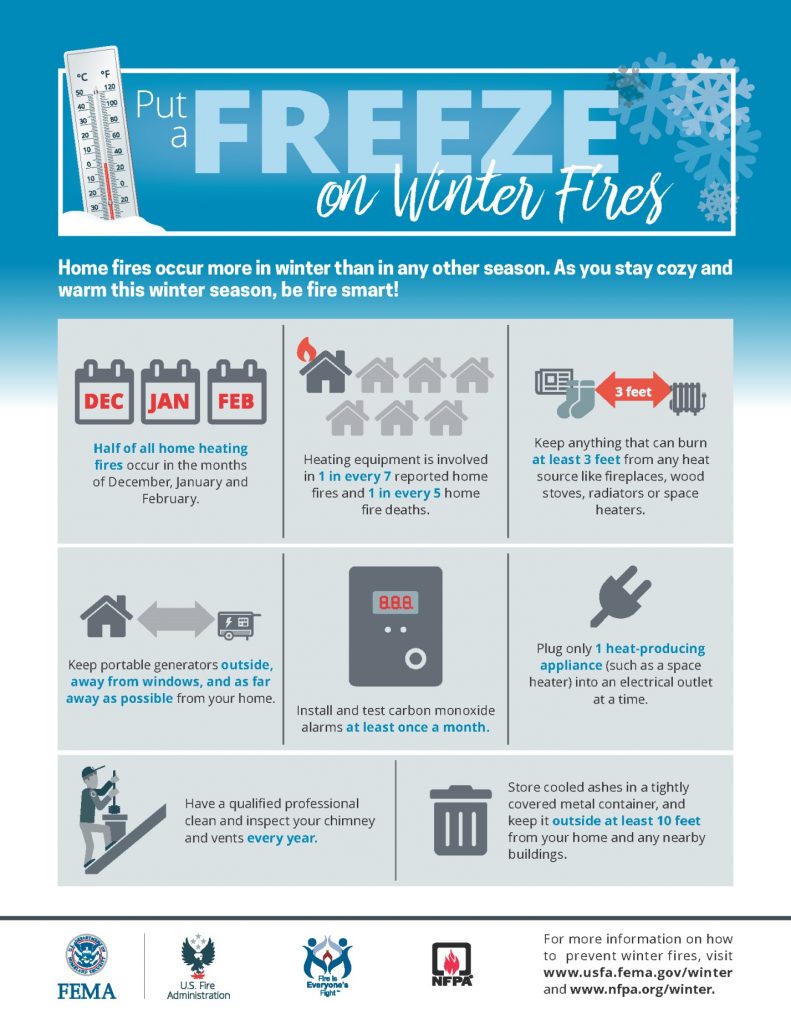The U.S Fire Administration cautions us that December through February are the prime time for home heating fires. As we discussed last week, the holidays can be dangerous times, but winter has dangers throughout the season. Just like you can take precautions to avoid slipping and falling, you can do some things to prevent home fires. Key to prevention is caution. Pay attention to possible sources of fire, and keep flammable materials at least 3 feet away from heat sources, like space heaters or fireplaces. Prevent electrical complications by only plugging a single heating device into an outlet, and make sure your vents and chimneys are clean. It is also important to install and regularly test carbon monoxide alarms. The CDC warns us that alternate forms of heating (that we might use during power outages, like gas ranges or portable generators) can cause a buildup of carbon monoxide, leading to poisoning of people and animals.

- Home fires occur more in winter than in any other season. As you stay cozy and warm this winter, be fire smart!
- Half of all home heating fires occur in the months of December, January, and February.
- Heating equipment is involved in 1 of every 7 reported home fires and 1 in every 5 home fire deaths.
- Keep anything that can burn at least 3 feet from any heat source like fireplaces, woodstoves, radiators, or space heaters.
- Keep portable generators outside, away from windows, and as far away from your home as possible.
- Install and test carbon monoxide alarms at least once a month.
- Plug only one heat-producing appliance (such as a space heater) into an electrical outlet at a time.
- Have a qualified professional clean and inspect your chimney and vents every year.
- Store cooled ashes in a tightly covered metal container, and keep it outside at least 10 feet from your home and any nearby buildings.
For more information on how to prevent winter fires, visit www.usfa.fema.gov/winter and nfpa.org/winter.

